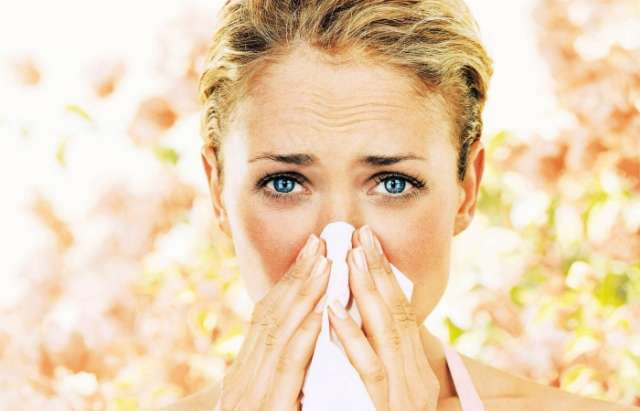If it feels like your allergies keep getting worse with each trip around the sun, that might really be the case. And there's a major culprit to blame: climate change.
According to the Union of Concerned Scientists, carbon dioxide (one of the greenhouse gases human activity emits that traps heat on the planet) increases plant growth rate. That, in turn, increases the quantity and potency of pollen.
Additionally, rising temperatures – caused by increasing carbon dioxide levels – make pollen-producing plants' growing seasons longer. That, of course, extends allergy season, too.
Higher temperatures can also lead individual plants to produce more pollen and can expand the geographic ranges of those plants.
Why a warming planet leads to longer, more intense allergy seasons
Rising carbon emissions are causing our planet's average surface temperature to increase. Last year was the fourth-warmest year on record overall, and the warmest year on record for the oceans.
According to the Asthma and Allergy Foundation of America (AAFA), these higher temperatures extended pollen season in the US by up to 27 days from 1995 to 2011.
Isabella Annesi-Maesano, research director at the French Institute of Health and Medical Research, told Business Insider that this warming is the reason we're seeing an "earlier onset of pollen season" as well.
A recent study published in The Lancet analysed the length of pollen season and the amount of pollen per plant in 17 locations across the Northern Hemisphere.
According to the data, which was collected over 26 year, 70 percent of the locations saw increases in the total amount of circulating pollen per growing season. In 65 percent of the spots, the pollen season got longer due to an "ongoing increase in temperature extremes," the authors reported.
Lewis Ziska, the lead author of that study, works as a weed ecologist with the US Department of Agriculture. He told the Union of Concerned Scientistsabout another climate-related allergy problem: Plants use carbon dioxide to make food via photosynthesis, but extra carbon dioxide in the air leads pollen-spreading, allergy-inducing weeds to grow faster than "useful plants" like rice and wheat.
"Ragweed, specifically, grew faster, flowered earlier, and produced significantly greater pollen," he said.
Ragweed is the primary trigger of fall hay fever, according to the AAFA. Warmer temperatures give ragweed longer growing seasons, enabling the plant to continue producing more pollen later into the fall.
If carbon-dioxide emissions continue unchecked, ragweed pollen production could increase by 60 percent to 100 percent in the next 65 years. Ragweed pollen could also become more allergenic as carbon-dioxide levels increase, according to the AAFA.
Allergies might continue to get worse
According to Annesi-Maesano, flooding due to sea-level rise can also provoke another kind of allergy.
"Flooding is at the origin of mould proliferation," she said; mould can causerespiratory irritation and is a common trigger for asthma and allergies.
Children are more susceptible to all of these allergens, since their organs and immune systems are still forming and because they have more exposure to climate-related contaminants.
In particular, children in low- and middle-income countries are disproportionately affected by consequences of warming, Annesi-Maesano said.
"Age matters in climate change, with children and elderly suffering more from the effects of climate change than the rest of the population," she added.
According to Annesi-Maesano, "it seems likely" that allergies will continue to get worse if carbon emissions keep rising.
More about: #ClimateChange
















































